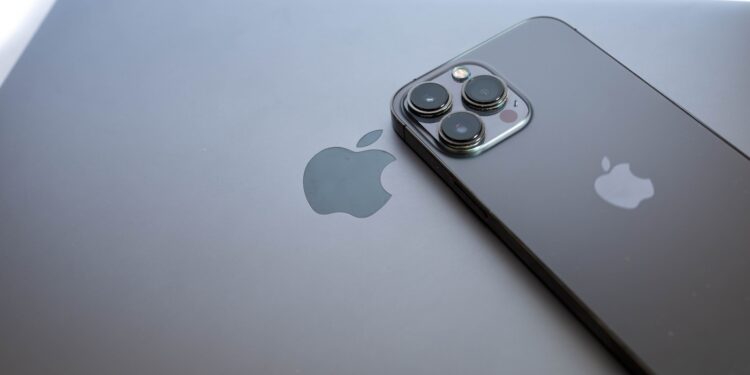If you frequently work with your Mac—whether working from home, podcasting, or attending online meetings—you're probably familiar with the problem of mediocre sound quality. The built-in microphones in MacBooks and iMacs are okay, but far from ideal. With macOS Ventura and iOS 16, Apple offers a simple solution: You can use your iPhone as a wireless microphone for your Mac. Without any additional accessories, it's easy thanks to the Continuity feature.
Since the introduction of macOS 13 Ventura in October 2022, there's been an enhanced Continuity Camera feature that allows you to use the iPhone camera as a webcam. Less well-known, but just as useful: You can also use your iPhone as a microphone input. This feature is especially useful if you rely on good audio quality and don't want to use external microphones. All you need is a compatible iPhone and a Mac with the latest operating system.
What you need
Before you start, check that the following requirements are met:
- Your Mac is running macOS 13 Ventura or a later version
- Your iPhone has iOS 16 or later installed
- Both devices are logged in with the same Apple ID account
- Your iPhone is near your Mac
If these requirements are met, you can get started right away. No additional app is required. The function is already integrated into the system.
How to set up your iPhone as a microphone
- Open System Preferences on your Mac. You can find it via the Apple menu in the top left corner of the menu bar.
- Click on “Sound” in the sidebar
- Switch to the “Input” tab at the top
- Your iPhone should now appear among the available input devices. It is labeled "Continuity Camera."
- Select your iPhone. A short tone will play, and a screen will appear on your iPhone saying "Connected to..."
- From this moment on, your iPhone will be recognized as a microphone and the sound will be transmitted wirelessly to your Mac
Disconnect or pause
If you don't need the microphone temporarily, you can pause the connection using the "Pause" button on your iPhone. To end the connection completely, tap the red "Disconnect" button. This will return the iPhone to normal mode.
What makes this feature special
The audio quality of an iPhone is usually significantly better than that of a Mac's built-in microphone. This is especially helpful for voice recordings, meetings, or video presentations. You don't need a USB microphone or adapter—your iPhone handles everything wirelessly. Continuity works reliably and without any noticeable lag. The connection can be activated or terminated at any time without having to restart your Mac. Another practical feature is that this feature works system-wide—so it can be used not only in FaceTime or Zoom, but also in all other apps that access the microphone input.
iPhone as a microphone: ready to use
If you have an iPhone and your Mac is up to date, you can get started right away. The combination of iOS and macOS makes it easy to achieve better sound quality without purchasing additional hardware. Your iPhone instantly becomes a high-quality microphone. Simple, fast, and effective. Looking for new accessories? Discover our Amazon Storefront now ! There you'll find a variety of products from top brands, ideal for HomeKit and more! (Image: Shutterstock / Benedek Alpar)
- Apple iPhone caller too quiet – here's what you can do
- Set Google Translate as the default app in iOS
- Mac tip: Keep things organized and clear with Mission Control
- macOS tip: Automatically remove files from the Trash





